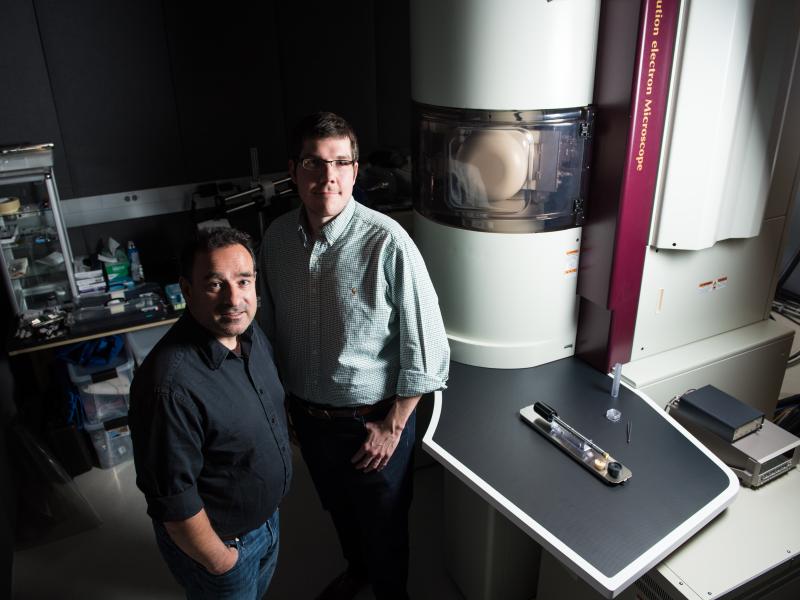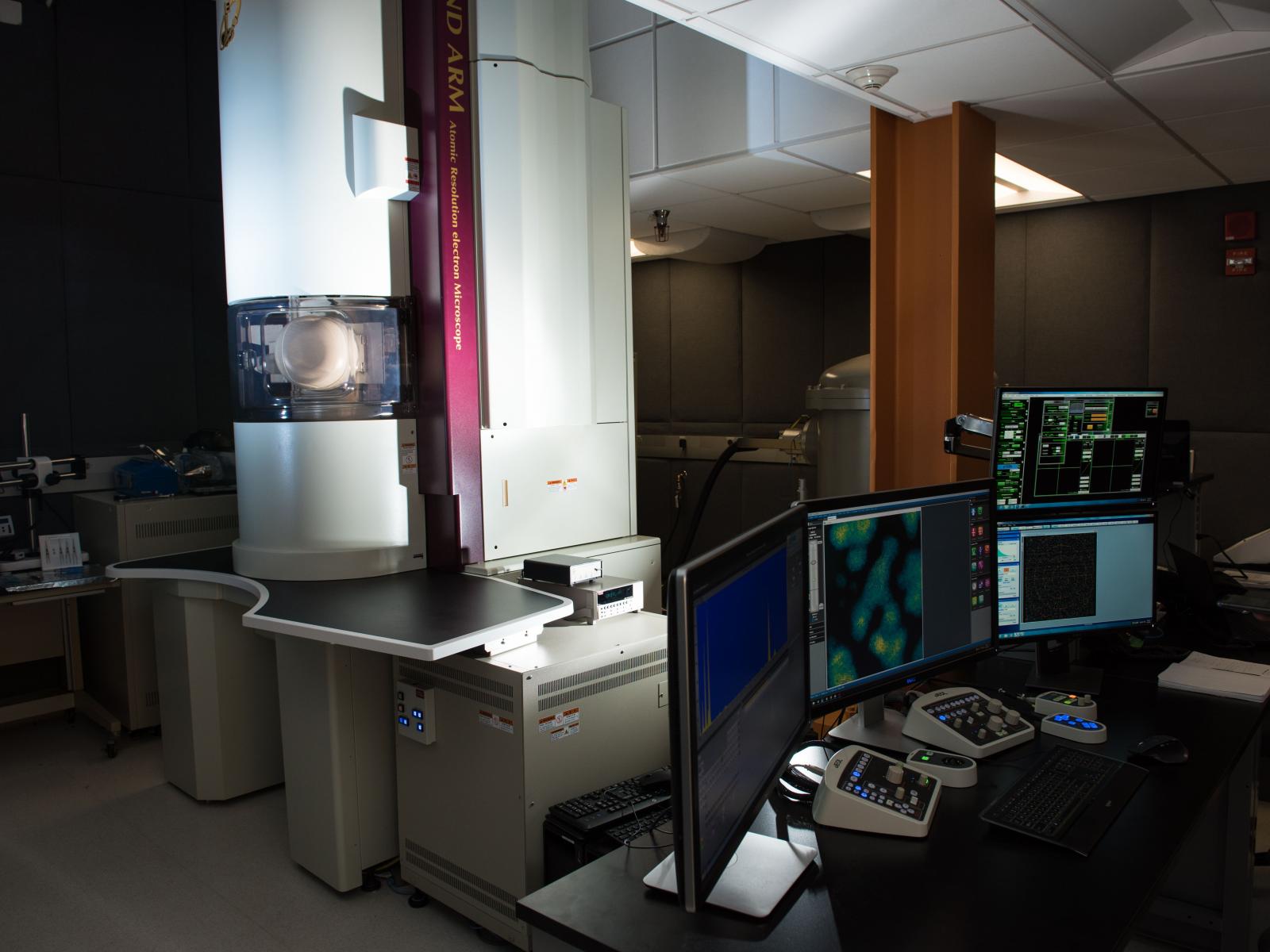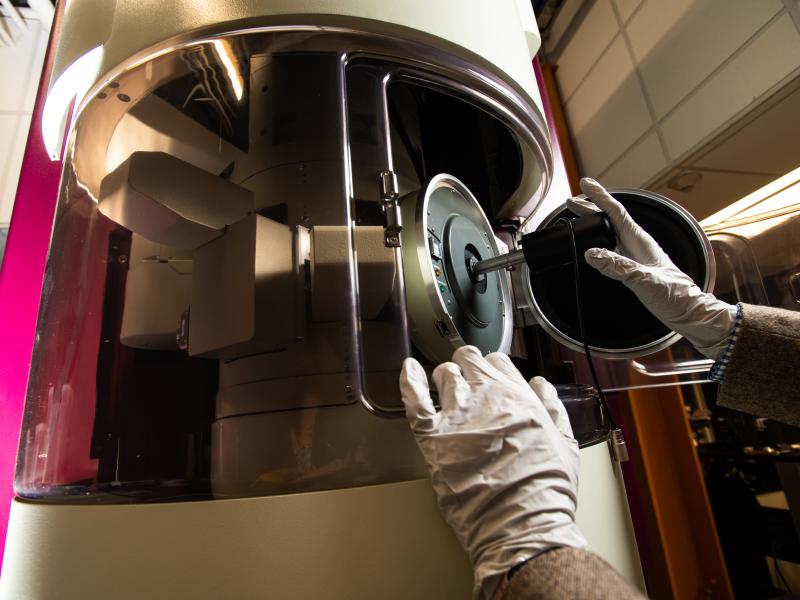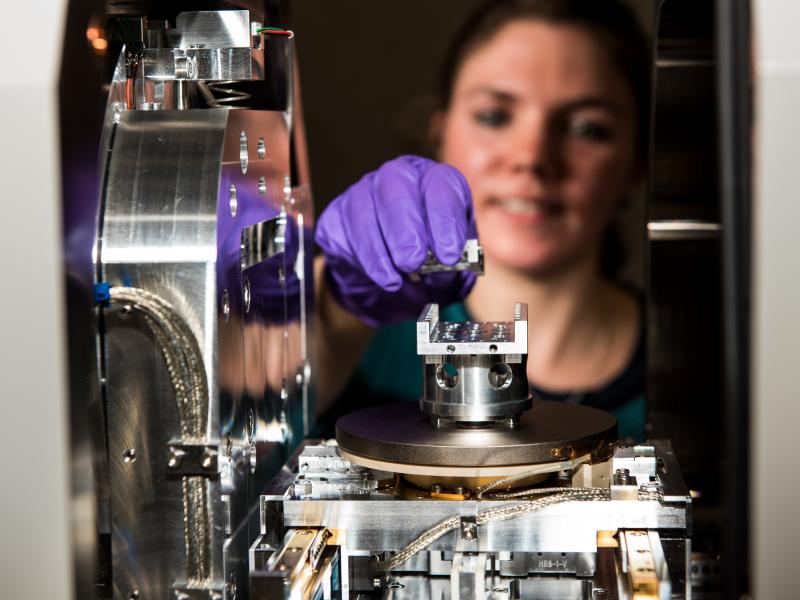
Radiological Microscopy Suite
Instrumentation magnifies PNNL's research

The Radiological Microscopy Suite at PNNL is home to a JEOL GrandARM-300F STEM. This unique instrument allows unprecedented atomic-scale characterization of nuclear materials, structural alloys, and functional systems in dynamic conditions.
(Photo by Andrea Starr | Pacific Northwest National Laboratory)
The Radiological Microscopy Suite provides highly sensitive instruments to examine and characterize radioactive materials. These advanced microscopes are located within the Radiochemical Processing Laboratory (RPL) at Pacific Northwest National Laboratory and are integral to our institutional electron microscopy capability. Combined with the ability of the RPL to safely receive and prepare highly radioactive materials for study, the microscopy capability here enables materials research not normally available elsewhere.
Sometimes referred to as the “quiet suite,” the exquisitely sensitive electron microscopes, shielded from noise, vibration, and thermal changes, reveal the atomic structure, composition, and forms of radioactive metals like plutonium and provide insight into technetium chemistry.
The Radiological Microscopy Suite consists of four specially designed laboratory spaces that house advanced microscopes and a sample preparation laboratory with a radiological fume hood to work with radioactive materials.
This combination of tools allows researchers to examine the dynamic behavior of radiological materials, from the micron to atomic scale, with unprecedented structural and chemical resolution—all in one facility. The scanning transmission electron microscope (STEM) delivers almost a thousand times higher resolution than other imaging technologies. For dynamic radiochemical studies, the STEM facility has an in-situ heating stage, in-situ liquid cell holder, cryo-holder, and vitrobot for the analysis of radioactive colloids and suspended particles, as well as a tomography stage.
Researchers use the facility to learn more about behavior of highly radioactive samples in the context of environmental remediation or radioactive waste management approaches. Scientists are also able to evaluate spent nuclear fuel and materials from research or commercial reactors to see how the components are impacted by their proximity to radiation—information which may extend the useful life of the reactors.
The specific instruments in the Radiological Microscopy Suite are:
- A world-class 300kV JEOL GrandARM-300F aberration-corrected STEM for atomic-resolution imaging and mapping of composition and chemical bonding. The instrument features dual X-ray detectors, a high-speed Gatan Quantum EELS system, and a range of holders for tomography, in situ, and other experiments.
- An FEI Helios 600 dual-beam focused ion beam (FIB) for site-specific preparation and imaging of cross-sectional samples, as well high-resolution X-ray mapping and micro-computed tomography.
- A FEI Quanta 250 environmental scanning electron microscope (SEM) for the examination of specimens in operando conditions.
- An Asylum Infinity atomic-force microscope (AFM) for high-resolution mapping of surface morphology and properties, such as hardness, magnetism, thermal conductivity, and electrical conductivity.
The Radiological Microscopy Suite may be accessible to researchers from other institutions because the RPL is a partner institution of the U.S. Department of Energy’s Nuclear Science User Facilities program.

PNNL scientists Edgar Buck and Steven Spurgeon in the Radiological Microscopy Suite, home to a JEOL GrandARM-300F STEM. This unique instrument allows unprecedented atomic-scale characterization of nuclear materials, structural alloys, and functional systems in dynamic conditions.
(Andrea Starr | Pacific Northwest National Laboratory)

Post doctorate student Bethany Mathews uses the Thermo Fisher Helios 660 Dual Beam FIB-SEM for preparation and analysis of radioactive and non-radioactive samples, including metals, oxides, and geologic materials.
(Andrea Turner | Pacific Northwest National Laboratory)

Post doctorate student Bethany Mathews uses the Thermo Fisher Helios 660 Dual Beam FIB-SEM for preparation and analysis of radioactive and non-radioactive samples, including metals, oxides, and geologic materials.
(Andrea Starr | Pacific Northwest National Laboratory)